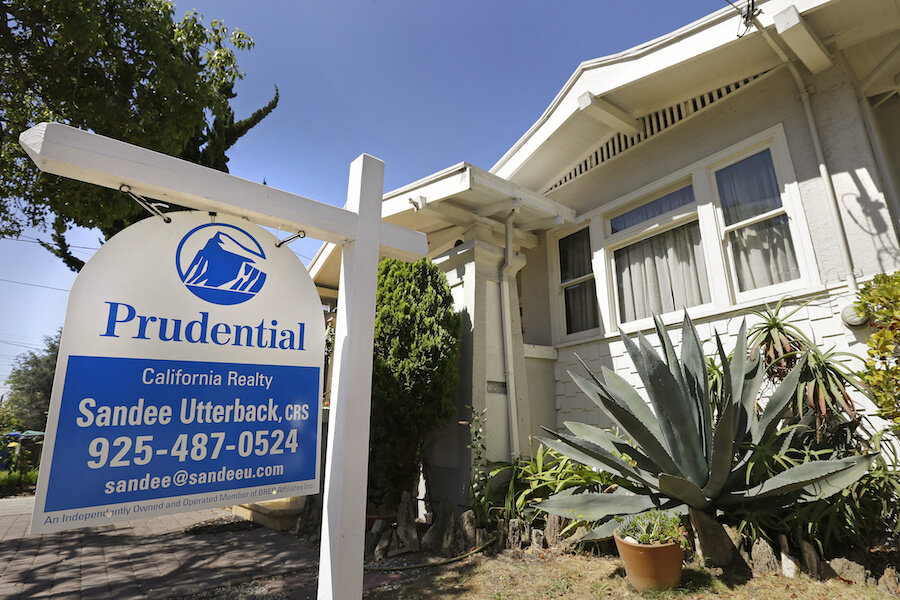Six questions to ask for lower mortgage rates
Loading...
Buying a home is a huge financial commitment, and finding the right mortgage can be a confusing process — especially for first-time homebuyers. Comparison shopping is the key to getting the best deal, and you’ll want to ask yourself, “How much house can I afford?” before getting too far into the process.
Here are six important questions to consider when deciding which mortgage is right for you:
1. Should I get a fixed- or adjustable-rate mortgage?
Mortgages generally come in two forms: fixed or adjustable rate. Fixed-rate mortgages lock you into a consistent interest rate that you’ll pay over the life of the loan. The part of your mortgage payment that goes toward principal plus interest remains constant throughout the loan term, though insurance, property taxes and other costs may fluctuate.
The interest rate on an adjustable-rate mortgage fluctuates over the life of the loan. An ARM usually begins with an introductory period of 10, seven, five or even one year, during which your interest rate holds steady. After that, your rate changes based on an interest rate index chosen by the bank.
ARMs look good to a lot of homebuyers because they usually offer lower introductory rates. But remember, your rate could go up after your introductory period, so be sure you’re comfortable with the chance your monthly mortgage payment could rise substantially in the future. Using the terms of the loan, you can calculate what your payment might look like in different rate scenarios.
2. Should I pay for points?
A point is an upfront fee — 1% of the total mortgage amount — paid to lower the ongoing interest rate by a fixed amount, usually 0.125%. For example, if you take out a $200,000 loan at 4.25% interest, you might be able to pay a $2,000 fee to reduce the rate to 4.125%.
Paying for points makes sense if you plan to keep the loan for a long time, but since the average homeowner stays in his or her house for about nine years, the upfront costs often outweigh interest rate savings over time.
Alternatively, there are negative points. It’s the opposite of paying points: A lender reduces its fees in exchange for a higher ongoing interest rate. It’s tempting to reduce your upfront fees, but the additional interest you pay over the life of the loan can be significant. Carefully consider your short-term savings and your long-term costs before taking negative points.
3. How much should I expect to pay in closing costs?
Closing costs usually amount to about 3% of the purchase price of your home and are paid at the time you close, or finalize, the purchase of a house. Closing costs are made up of a variety of fees charged by lenders, including underwriting and processing charges, title insurance fees and appraisal costs, among others. You’re allowed to shop around for lower fees in some cases, and the Loan Estimate form will tell you which ones those are. Shopping for the right lender is a good way to save money on a mortgage and associated fees.
4. Do I qualify for any special programs?
Before you settle on a mortgage, find out if you’re eligible for any special programs that make home-buying less costly. For example:
- VA loans: If you or your spouse are active military or veterans, you might qualify for a VA loan. Such loans allow low (or no) down payments and offer protections if you fall behind on your mortgage.
- FHA loans: Like VA loans, FHA loans allow low down payments, but they’re open to most U.S. residents. They’re popular with first-time homebuyers, because they require as little as 3.5% down and are more forgiving of low credit scores than traditional lenders.
- USDA loans: If you live in a rural area, the USDA might give you a low- or no-down-payment mortgage and help cover closing costs. Like VA loans, USDA loans can also offer help if you fall behind on your payments.
- First-time homebuyer programs: If this is your first go-round in the homeownership process, check out the HUD website for helpful information and a list of homebuyer assistance programs in your state.
5. How much can and should I put down?
Generally speaking, a lower down payment leads to a higher interest rate and paying more money overall. If you can, pay 20% of your home’s purchase price in your down payment. However, if you don’t have that kind of cash, don’t worry. Many lenders will accept down payments as low as 5% of your home’s purchase price.
Be aware: Low-down-payment loans often require private mortgage insurance, which adds to your overall cost, and you’ll probably pay a higher interest rate. Put down as much as you can while maintaining enough of a financial cushion to weather potential emergencies.
6. What else should I be on the lookout for?
Remember these last tips as you’re buying a home:
- Use your Loan Estimate to compare costs. Every lender should provide a statement of your potential loan’s terms and costs before you commit. This will help you make an apples-to-apples comparison between loan offers.
- Comparison shop with as many banks, credit unions and online lenders as possible, and ask for referrals from your real estate agent and friends, to get a complete picture of your options. Prioritize credit unions in your search. Credit unions are not-for-profit lending institutions that often have lower rates and fees than for-profit banks.
- Confine your search for a mortgage to a 14-day window. If you apply for mortgages beyond a two-week time period, the credit inquiries could temporarily lower your credit score.
Taking on a mortgage is an important decision that has huge implications for your financial future. Ask smart questions and explore all of your options to save on costs and find the right loan.
This article first appeared at NerdWallet.





